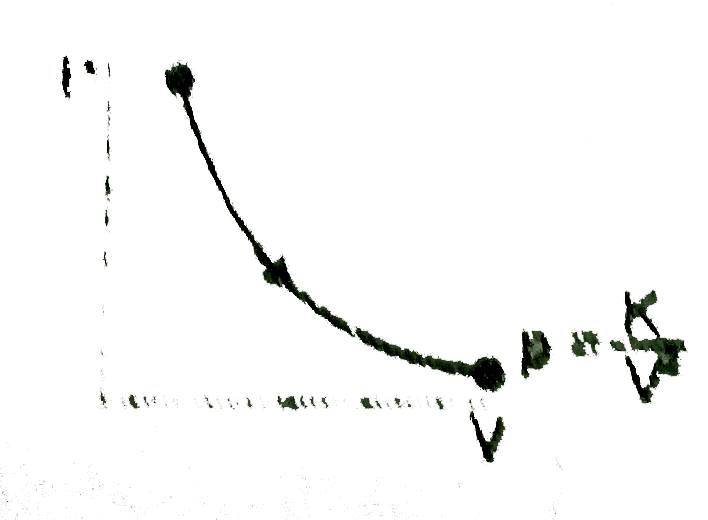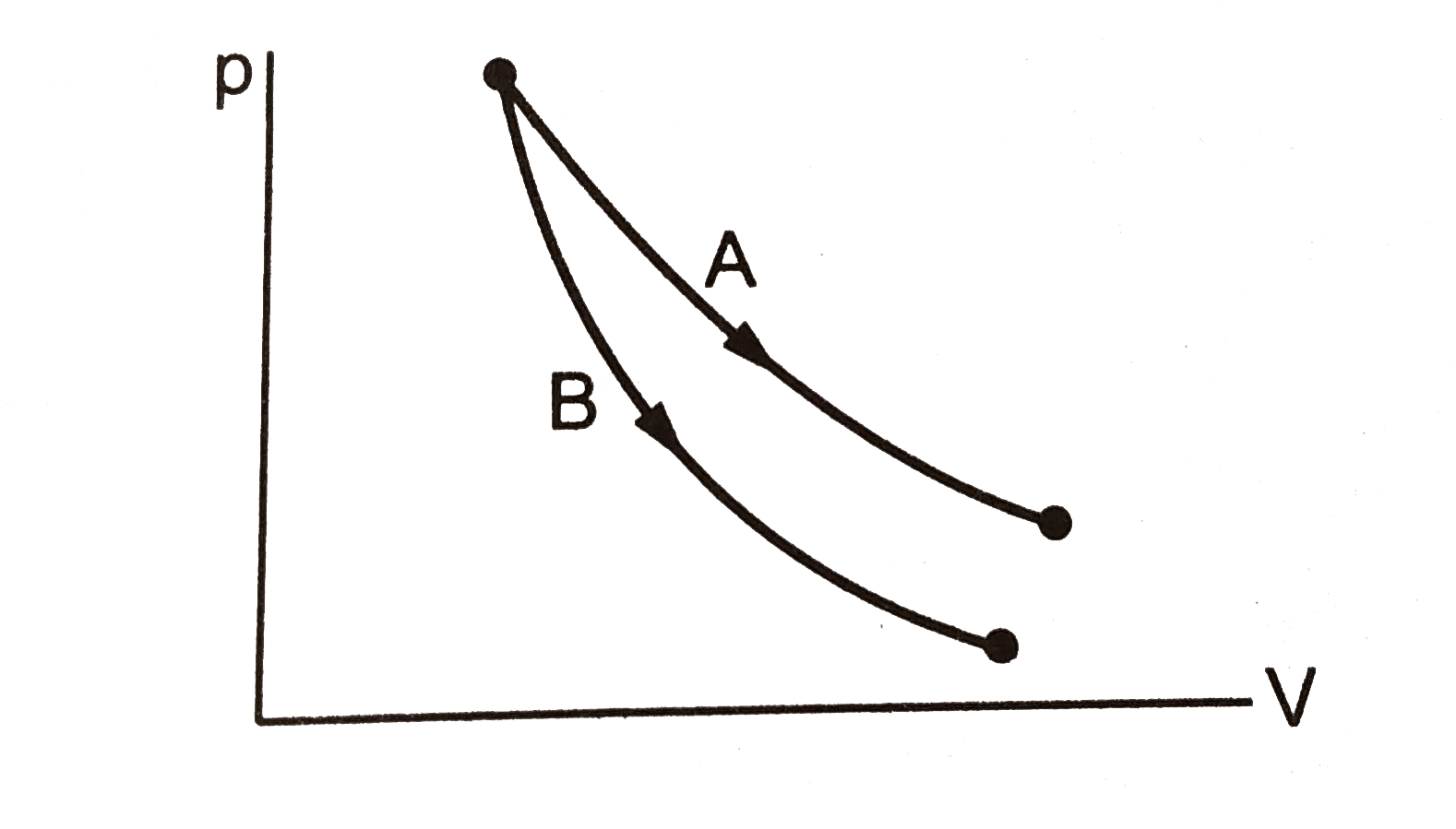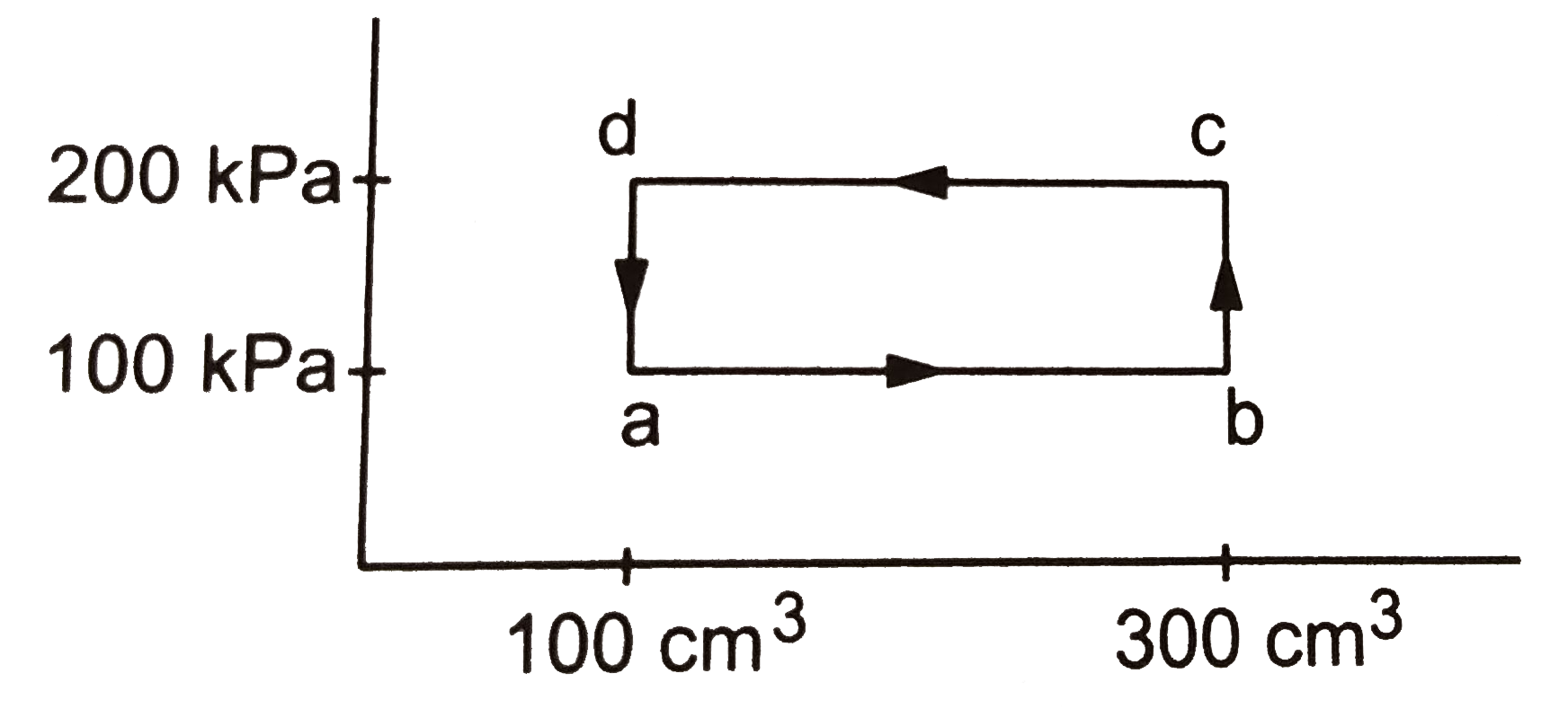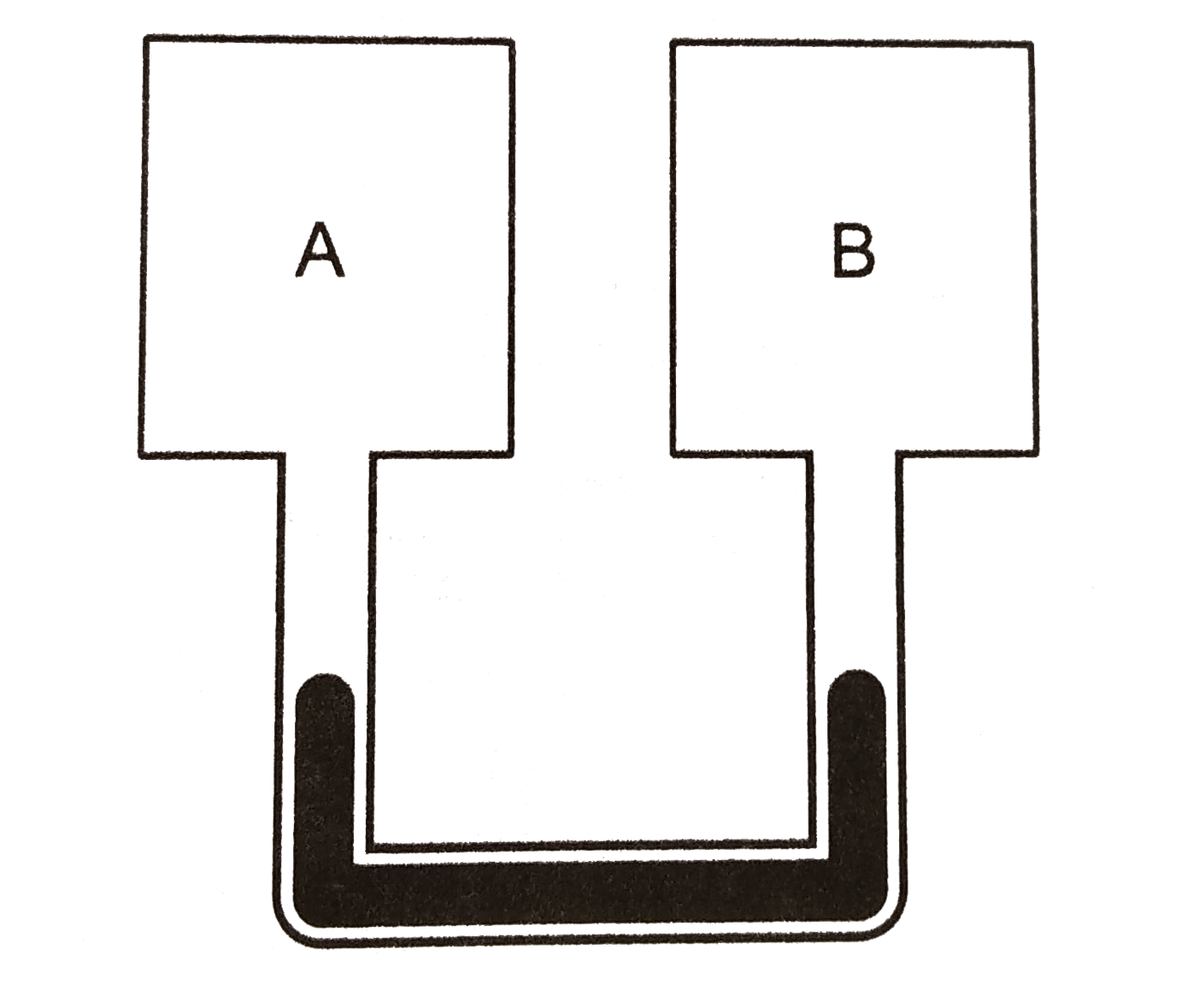Complete Solutions to All Questions of chapter SPECIFIC HEAT CAPACITIES OF GASES of Class 11 book with complete answers and questions
| Class 11 | PHYSICS |
| Chapter | SPECIFIC HEAT CAPACITIES OF GASES |
| HC VERMA | All Questions |
| Number Of Questions | 74 |
| Academic Year | 2023-24 |
`0.32 g` of oxygen is kept in a rigid container and is heated. Find the amount of heat needed to raise the temperature from `25^0 C to 35^0 C`. The molar heat capacity of oxygen at constant volume is `20 J K^(-1) mol^(-1)`.
03:33View SolutionA tank of volume `0.2 m^3` contains helium gas at a temperature of `300 K` and pressure `1.0 xx 10^5 N m^(-2)`. Find the amount of heat required to raise the temperature to `400 K`. The molar heat capacity of helium at constant volume is `3.0 cal K^(-1 ) mol^(-1)`. Neglect any expansion in the volume of tank.
03:48View SolutionThe molar heat capacity of a gas at constant volume is found to be `5 cal mol^(-1) K^(-1)`. Find the ratio`gamma = C_p/C_v` for the gas. The gas constant `R=2 cal mol^(-1) K^(-1).
01:54View SolutionDry air at `15^0 C` and 10 atm is suddenly released at atmospheric pressure. Find the final temperature of the air `[C_p / C_v = 1.41]`.
05:21View SolutionCalculate the internal energy of `1 g` of oxygen STP.
04:06View SolutionThe molar heat capacity of a gas at constant volume is found to be `5 cal mol^(-1) K^(-1)`. Find the ratio `gamma = C_p/C_v` for the gas. The gas constant `R=2 cal mol^(-1) K^(-1)`.
01:54View SolutionAt a given volume and temperature, the pressure of a gas ……….. .
01:10View SolutionIf heat is supplied to an ideal gas in an isothermal process.
03:58View SolutionAn experiment is performed to measure the molar heat capacity of a gas at constant pressure using Regnault's method. The gas is initially contained in a cubical reservoir of size ` 40 cm xx 40 cm xx 40 cm xx at 600 kPa at 27^0C`. A part of the gas is brought out, heated to 100^0C and is passed through a calorimeter at constant pressure. The water equivalent of the calorimeter and its contents increases from `20^0C to 30^0C` during the experiment and the pressure in the reservoir decresases to `525 kPa`. Specific heat capacity of water =`4200 J kg^(-1) K^(1). Calculate the molar heat capacity Cp from these data.
03:08View Solutiona) In a process on a system, the initial pressure and volume are equal to final pressure and volume, then
02:55View SolutionA sample of gas `(gamma = 1.5)` is taken through an adiabatic process in which the volume is compressed from `1600 cm^(3) to 400 cm^(3)`. If the initial pressure is `150 kPa`, (a) what is the final pressure and (b) how much work is done by the gas in the process?
05:20View SolutionIf temperature and volume of an ideal gas is increased to twice its values, the initial pressure P becomes
02:37View SolutionAn ideal gas enclosed in a vertical cylindrical container supports a freely moving piston of mass M. the piston and the cylinder have equal cross sectional area A. when the piston is in equilibrium, the volume of the gas is `V_(0)` and its pressure is `P_(0)`. the piston is slightly displaced from the equilibrium posittion and released. assuming that the system is completely isolated from its surrounding, the piston executes a simple harmonic motion with frequency
05:56View SolutionThe AM and GM of two positive numbers are 15 and 9 respectively. The numbers are
02:15View Solution1 mole of a gas with `gamma = (7)/(5)` is mixed with 1 mole of gas with `gamma = (5)/(3 )` , then value of `gamma` of the resulting mixture is
02:57View SolutionCalculate the ratio `(C_p / C_v)` of oxygen from the following data . Speed of sound in oxygen`(= 32g mol^(-1))` and the gas constant `(R = 8.3 J K ^(-1) mol^(-1))`.
03:03View SolutionDoes a gas have just two specific heat capacities or more than two ? Is the number of specific heat capacicties of a gas countable?
04:15View SolutionCan we define specific heat capacity at constant for an adiabatic process?
09:15View SolutionDoes a solid also have two kinds of molar heat capacities `C_p` and `C_v`? If yes , do we have `C_p gt C_v`? Is `C_p - C_v = R`?
03:35View SolutionEach molecule of a gas has f degrees of freedom. The ratio `( C_p / C_v ) = gamma` for the gas is
02:14View SolutionCan a process on an ideal gas be both adiabatic and isothermal. ?
03:46View SolutionFor an adiabatic process q = ______
02:05View SolutionIs a slow process always isotheramal ? Is a quick process always adiabatic?
03:59View SolutionCan two states of an ideal gas be connected by an isothermal process as well as an adiabatic process?
04:08View SolutionThe ratio `(C_p / C_v)` for a gas is 1.29 . What is the degree of freedom of the molecules of this gas?
01:53View SolutionWork done by a sample of an ideal gas in a process A is double the work done in another process B. The temperature rises through the same amount in the two processes. If `(C_A and C_B) be the molar heat capacities for the two processes,
05:38View SolutionFor a solid with a small expansion coefficient,
05:48View SolutionThe value of `C_(p) - C_(v)` is `1.09R` for a gas sample in state `A` and is `1.00R` in state `B`. Let `T_(A),T_(B)` denote the temperature and `p_(A)` and `p_(B)` denote the pressure of the states `A` and `B` respectively. Then
03:25View SolutionThe molar heat capacity for the process shown in fig. is
 03:08View Solution
03:08View SolutionIn a isothermal process on an ideal gas, the pressure increases by 0.5% . The volume decreases by about.
02:36View SolutionIn an adiabatic process on a gas with `(gamma = 1.4)` th pressure is increased by 0.5% . The volume decreases by about
03:20View Solutiontwo samples 1 and 2 are initially kept in the same state. the sample 1 is expanded through an isothermal process where as sample 2 through an adiabatic process up to the same final volume.Let `p_(1)` and `p_(2)` be the final pressure of the samples and 2 respectively in the previous question then.
04:30View SolutionLet `T_a and T_b` be the final temperatures of the samples A and B respectively in the previous question.
03:35View SolutionThe molar heat capacity of oxygen gas at STP is nearly 2.5R. As the temperature is increased, it gradually increases and approaches 3.5 R. The most appropriate reason for this behaviour is that at high temperature
02:49View SolutionA gas kept in a container of finite conductivity is suddenly compressed . The process
03:10View SolutionLet Q and W denote the amount of heat given to an ideal gas the work done by it in an isothermal process.
04:10View SolutionLet `Q and W` denote the amount of heat given to an ideal gas and the work done by it in an adiabatic process.
02:42View SolutionConsider the processes A and B shown in Figure (27- Q3 ) It is possible that (fig.)
 01:46View Solution
01:46View SolutionThree identical adiabatic containers `A, B and C` Contain helium, neon and oxygen respectively at equal pressure. The gases are pushed to half their original volumes. (initial temperature is same)
02:51View SolutionA rigid container of negligible heat capacity contains one mole of an ideal gas. The temperatures of the gas increases by `1^@C` if `3.0` cal of heat is added to it. The gas may be
05:45View SolutionFour cylinders contain equal number of moles of argon, hydrogen, nitrogen and carbon dioxide at the same temperature. The energy is minimum in
02:19View SolutionA vessel containing one of mole of a monatomic ideal gas (molecular weight = `20 g/(mol)`) is moving on a floor at a speed of `50 m s^(-1)` The vessel is stopped suddenly. Assuming that the mechanical energy lost has gone into the internal energy of the gas , find the rise in its temperature .
05:32View Solution`5g` of a gas is contained in a rigid container and is heated from `15^@C to 25^@C` . Specific heat capacity of the gas at constant volume is `0.172 cal g ^(-1)^@C^(-1)` and the mechanical equivalent of heat is 4.2 J cal . Calculate the change in the internal energy of the gas.
04:42View SolutionFigure shows a cylindrical container containing oxyegn `(gamma = 1.4)` and closed by a 50 kg frictionless piston. The area of cross section is `100cm(2)` , atmospheric pressure is `100 kPa`+E2 and g is 10 m s^(-2)`. The cylinder is slowly heated for some time. Find the amount of heat supplied to gas if the piston moves out through a distsnce of 20 cm.
 .07:21View Solution
.07:21View SolutionThe specific heat capacities of hydrogen at constant volume and at constant pressure are `2.4 cal g^(-1)K ^(-1) and 3.4 cal g^(-1) K^(-1)` respectively. The molecular weight of hydrogen is `2g mol^(-1)` and the gas constant `R= 8.3 xx 10^(7)erg K^(-1) mol^(-1)` . Calculate the value of `J`.
03:26View SolutionThe ratio of the molar heat capacities of an ideal gas is `(C_p / C_v = 7/6)`. Calculate the change in internal energy of 1.0mole of the gas when its temperature is raised by `50 K `, (a) keeping the pressure constant , (b) keeping the volume constant and (c ) adiabatically.
04:14View SolutionA sample of air weighing `1.18 g` occupies `1.0 xx 10^(3) cm^(3)` when kept at `300 K and 1.0 xx 10^(5)` pa. When `2.0 cal` of heat is added to it constant volume, its temperature increases by `1^@C`. Calculate the amount if heat needed to increases the temperature of air by `1^@C` at constant pressure if the mechanical equivalent of heat si `4.2 xx 10^(-1)` . Assume that air behaves as an ideal gas.
04:21View SolutionAn ideal gas is taken through a process in which the pressure and the volume are changed according to the equation `p=kv`. Show that the molar heat capacity of the gas for the process is given by `(C=C_v + ( R)/(2))`.
03:38View SolutionAn ideal gas `(C_p // C_V = (gamma)` is taken through a process in which the pressure and the volume vary as `P = aV^b`. Find the values of (b) for which the specific heat capacity of the gas for the process is zero.
02:44View SolutionTwo ideal gases have same value of `(C_p / C_v = gamma)`. What will be the value of this ratio for a mixture of the two gases in the ratio `(1:2)`?
03:10View SolutionA mixture contains 1 mole of helium `(c_p = 2.5 R, C_v 1.5 R. )` and 1mole of hydrogen `(C_p = 3.5 R, C_v = 2.5 R, )` . Calculate the values of `C_p , C_v and gamma` for the mixture.
04:58View SolutionA thermodynamic system is taken through the cycle abcda. (a) calculate the work done by the gas during the parts ab, bc, cd and da. (b) find the total heat rejected by the gas during the process.
 02:21View Solution
02:21View SolutionAn ideal gas `(gamma = 1.67 )` is taken through the process abc shown in figure . The temperature at the point a is `300 k`. Calculate (a) the temperature at b and c, (b) the work done in the process.
 03:38View Solution
03:38View SolutionIn Joly's differential steam calorimeter, `3g` of an ideal gas is ccontained in a rigid closed sphere at `20^@C`. The sphere is heated by steam at `100^@C` and it is found that an extra `0.095 g` of steam has condensed into water as the temperature of the gas becomes constant. Calculate the specific heat capacity of the gas in `(Jg^(-1) K^(-1).` The latent heat of vaporization of `water = 540 cal g ^(-1)`.
04:00View SolutionThe volume of an ideal gas `(gamma = 1.5 )` is changed adiabatically from 4.00 liters to 3.00 liters . Find the ratio of (a) the final pressure to the initial pressure and (b) the final temperature to the initial temperature.
04:00View SolutionAn ideal gas at pressure `2.5 xx 10^(5)` `pa` and temperature `300k` occupies `100`cc. It is adiabatically compressed to half its original volume. Calculate (a) the final pressure, (b) the final temperature and ( c) the work done by the gas in the process. Take `(gamma = 1.5)`.
06:05View SolutionAir `(gamma = 1.4 )` is pumped at 2atm pressure in a motor tyre at `20^@C`. If the tyre suddenly bursts, what would be the temperature of the air coming out of the tyre. Neglect any mixing with the atmospheric air.
04:58View SolutionA gas is enclosed in a cylindrical can fitted with a piston. The walls of the can and the piston are adiabatic. The initial pressure , volume and temperature of the gas are `100 kPa, 400cm^(3)` and `300K` respectively. The ratio of the specific heat capacities of the gas is `(C_p / C_v = 1.5)` Find the pressure and the temperature of the gas if it is (a) suddenly compressed (b) slowly compressed to `100 cm^(3)`.
07:14View SolutionThe initial pressure and volume of a given mass of a gas `(C_p / C_v = gamma)` are `(p_0)` and `(V_0)`. The gas can exchange heat with surrounding. (a) It is slowly compressed to a volume `(V_0 / 2 )` and then suddenly compressed to `(V_0 /4)` . Find the final pressure. (b) If the gas is suddenly cpmpressed from the volume `(V_0 to V_0 / 2 )` and then slowly compressed to `(V_0 / 4 )`, What will be the final pressure?.
09:57View SolutionConider a given sample of an ideal gas `(C_p / C_v = gamma )` having initial pressure `(p_0) and volume (V_0)` . (a) The gas is isothermally taken to a pressure `(P_0 / 2 )` and from there adiabatically ta a pressure `(p_0 / 2)` and from there isothermally to a pressure `(p_0 / 4 )` . find the volume.
05:48View SolutionA given sample of an ideal gas `(gamma = 1.5 )` is compressed adiabatically from a volume of `150 cm ^(3)` to `50 cm ^(3)`. The initial pressure and the initial temperature are `150 kpa` and `300K`. Find (a) the number of moles of the gas in the sample, (b) the molar heat capacity at constant volume.
05:13View SolutionThree samples A, B and C of the same gas `(gamma = 1.5)` have equal volumes and temperatures. The volume of each sample is doubled, the process being isothermal for A, adiabtic for B and isobaric for C. If the final pressures are equal for the three samples, Find the ratio of the initial pressures.
05:16View SolutionTwo samples A and B of the same gas have equal volumes and pressures . The gas is sample A is expanded isothermally to double its volume and the the gas in B is expanded adibatically to double its volume . If the work done by the gas is the same for the two cases, show that gamma satisfies the equation`(1-2 ^(1-gamma)= (gamma - 1 ) 1n2`.
05:08View Solution1 liter of an ideal gas `(gamma =1.5)` at `300k` is suddenly compressed to half its original volume. (a) Find the ratio of the final pressure to the initial pressure. (b) If the original pressure is `100 kpa`, find the work done by the gas in the process. (c) What is the change in internal energy? (d) What is the final temperature? (e) the gas is now colled to `300k` keeping its pressure constant. Calculate the work done during the process . (f) The gas is now expanded iasothermally to achive its original volume of 1 liters. Calculate the work done by the gas .(g) Calculate the total work done in the cycle.
05:48View SolutionFigure shows a cylindridcal tube with a adibatic walls and fitted with an adiabatic separtor. The separator can be slid into the tube by an external mechanism. An ideal gas`(gamma=1.5)` is injected in the two sides at equal pressures and temperatures . The separator remains in equilibrium at the middel. It is now slid to a position where it divides the tube in the ratio 1:3 Find the ratio of the tempertures in the two parts of the vessel.
 04:39View Solution
04:39View SolutionFigure shows two rigid vessels A and B, each of volume `200 cm ^(3)` containg an ideal gas `(C_v = 12.5 JK ^(-1) mol^(-1))`. The vessels are connected to a manometer tube containing mercury. The pressure in both the vessels is 75 cm mercury and the temperature is 300k. (a) `(5-0 J)` of heat is supplied to the gas in the vessels.(b) `(10 J)` to the gas in the vessels B. Assuming no appreciable transfer of heat from A to B calculate the dufference in the heights of mercury in the two sides of the manometer. Gas constant `(R = 8.3 JK^(-1) mol^(-1))`
 04:54View Solution
04:54View SolutionFigure shows two vessels with adiabatic walls, one containing 0.1 g of helium `(gamma =1.67 , M = 4 g mol^(-1))` and the other containing some amount of hydrogen `(gamma = 1.4, M = 2 g mol^(-1))`. Initially , the temperatures of the two gases are equal. The gases electrically heated for some time during which equal amounts of heat are given to the gases. It is found that the temperatures rise through the same amount in the two vessels. Calculate the mass of hydrogen.
 04:44View Solution
04:44View SolutionTwo vessels A and B of equal volume `(V_0)` are connected by a narrow tube which can be closed by a value. The vessels are fitted with piston which can be moved to change the volumes. Initially, the valve is open and the vessels contain an ideal gas `(C_p / C_v = gamma )` at atomspheric pressures`(P_0)` and atmoshpeheric temperature `(T_0)`. The walls of the vessels A are diathermic and those of B are adiabatic. The value is now closed and the pistons are slowly pulled out to increase the volumes of the of the vessels to dobuled the original value.(a) Find the temperatures and pressures in the two vessels. (b) The value is now opened for sufficeint time so that the gases acquire a common tempertures and pressures . Find the new values of the temperatuere and the pressures.
05:49View SolutionIn given figure, an adiabatic cylindrical tube of volume `2V_(0)` is divided in two equal parts by a frictionless adiabatic separator. An ideal gas in left side of a tube having pressure `P_(1)` and temperature `T_(1)` where as in the right side having pressure `P_(2)` and temperature `T_(2).C_(p)//C_(v) =gamma` is the same for both the gases. The separator is slid slowly and is released at a position where it can stay in equilibrium. Find (a) the final volumes of the two parts (b) the heat given to the gas in the left part and (c) the final common pressure of the gases,
 08:40View Solution
08:40View SolutionAn adiabatic cylindrical tube of cross-sectional area `1 cm^(2)` is closed at one end fitted with a piston at the other end. The tube contains `0.03 g` of an ideal gas . At `1 atm` pressure and at the temperature of the surrounding, the length of the gas column is `40cm`.The piston is suddenly pulled out to double the length of the column. The pressure of the gas falls to `0.355 atm`. Find the speed of sound in the gas at atmospheric temperature.
06:00View SolutionThe speed of sound in hydrogen at `0^@C` is `1280 m s^(-1)`. The density of hydrogen at STP is `0.089 kg m^(-3)`. Calculate the molar heat capacities `(C_p and C_v)` of hydrogen.
05:17View Solution`4.0 g` of helium occupies `22400 cm^(3)` at STP. The specific heat capacity of helium at constant pressure is `( 5.0 cal K^(-1) mol ^(-1))`. Calculate the speed of sound in helium at STP.
04:25View SolutionAn ideal gas having density `1.7 xx 10^(-3) g cm ^(-3)` at a pressure `1.5 xx 10^(5)Pa` is filled in Kundt tube. When the gas is resonated at a frequency of `3.0 KHz`, nodes are formed at a separation of `6.0 cm` . Calculate the molar heat capacites `(C_p and C_v)` of the gas.
04:27View SolutionStanding waves of frequency `5.0 kHz` are produced in a tube filled with oxygen at `300K`. The separation between the consecutive nodes is `3.3 cm`. Calculate the specific heat capacities `(C_p and C_v)` of the gas.
05:47View Solution
All Questions questions and complete solutions for chapter SPECIFIC HEAT CAPACITIES OF GASES of HC VERMA of Class 11
